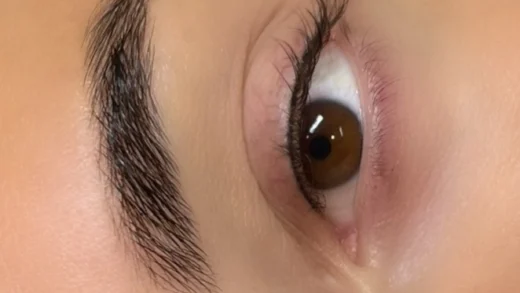How Deep Should You Go Into the Skin When Doing Cosmetic Tattooing? It’s not just a technical detail — it’s the foundation of a successful result. Whether you’re after natural brows, soft eyeliner, or a tinted lip, understanding depth is what separates a beautiful fade from a blowout.
In the world of cosmetic tattooing, depth is everything. Go too deep, and you’re flirting with scarring, blowouts, or pigment migration. Stay too shallow, and the colour will fade out before your client has time to fall in love with it. At Cosmetic Tattoo Studio Face Figurati, we’ve corrected more than our share of botched brow tattoos, bleeding lip lines, and ghostly eyeliner wings — and 9 times out of 10, it comes down to poor depth control.
So let’s get into the skin of it — literally. Here’s what every cosmetic tattooist (and every savvy client) should know about how deep cosmetic tattoos should go.
Contents
The Skin Has Layers (And They Matter)
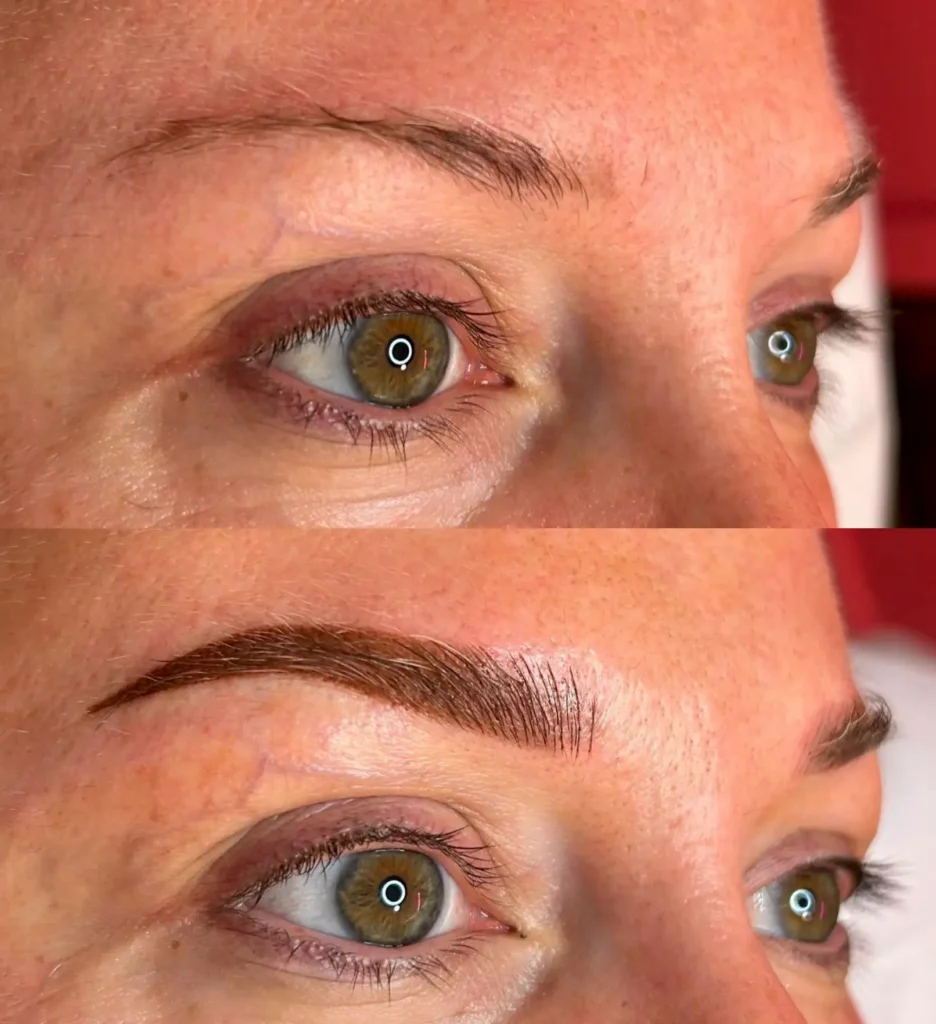
To understand tattoo depth, you need to understand the skin’s layers. It’s not just a blank canvas — it’s a complex, living barrier influenced by skin tone, personal preferences, and skin conditions. Any experienced cosmetic tattoo artist will tell you that good work starts with understanding the canvas before you ever touch the machine.
The skin has three main layers:
- Epidermis: The surface layer. Constantly regenerates.
- Dermis (papillary and reticular): The middle layer. This is where cosmetic tattoo pigment should sit.
- Hypodermis: The deeper fatty layer. Trauma lives here.
Cosmetic tattooing services target the papillary dermis, typically at a depth of 0.5mm to 1.5mm. Micro – pigmentation placed here delivers more natural-looking, semi-permanent makeup results.
“You’re aiming for that sweet spot — deep enough for retention, shallow enough for a natural fade.”
What Can Go Wrong
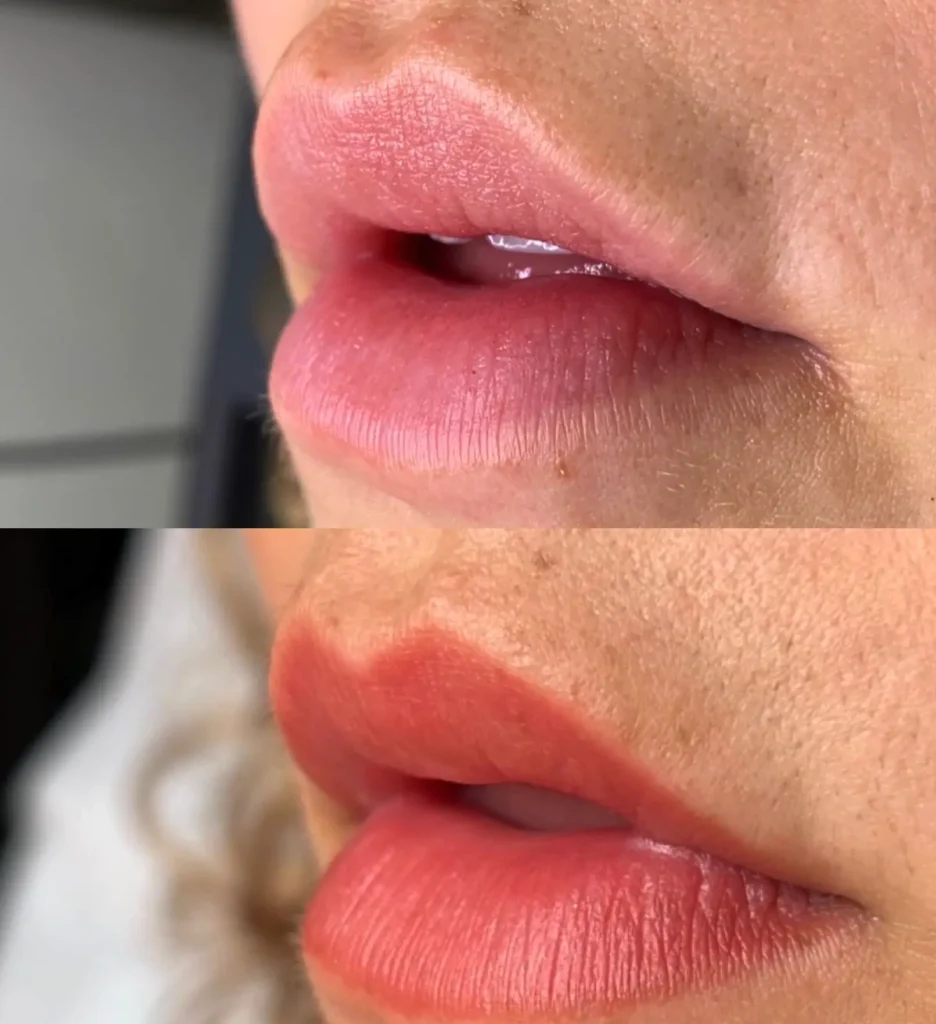
Getting the depth wrong affects pigment retention, healing process, and long-term skin health. That’s why at Cosmetic Tattoo Melbourne clinics, precision isn’t optional — it’s everything.
If You Tattoo Too Deep:
- Risk of infection, scarring, or hyperpigmentation
- Colour may change due to sun exposure or specialised pigment shifting
- Greater risk of allergic reactions or complications with blood disorders
- Longer healing time, increased chance of Minor swelling and discomfort
If You Tattoo Too Shallow:
- Semi-permanent pigment doesn’t hold
- Uneven application of eyeliner tattoo, brow strokes, or lip colour
- More visible pigment loss post treatment (especially in dry skin)
- Results may fade within weeks, particularly with excessive sweating or oily skin
Factors That Affect Depth
Each area of the face has different thicknesses and reacts differently to the tattoo procedure. Healing varies depending on age, skin type, and medication. A skilled cosmetic tattooist adjusts their technique based on skin response, not just the area being treated.
| Area | Average Depth Range | Skin Considerations |
|---|---|---|
| Eyebrow tattooing | 0.8mm to 1.3mm | Skin type (oily/dry), previous tattooing painful or scarred areas |
| Eyeliner Tattooing | 0.5mm to 1.0mm | Thin skin, amounts of lash glue, lash extensions, contact lenses |
| Lip tattooing | 1.0mm to 1.5mm | High vascularity, lip procedures require numbing cream |
| Scalp | 1.0mm to 1.3mm | Hair loss areas, sun exposure, hair colour contrast |
Other influencing factors include blood-thinning medications, fish oil supplements, and anti-viral medication, especially when planning a lip tattoo or eyeliner tattoo procedure.
Tip: If unsure, start light. Cosmetic tattooing is a 2-step process with adjustments in follow-ups.
Tools, Needles, and Techniques That Influence Depth
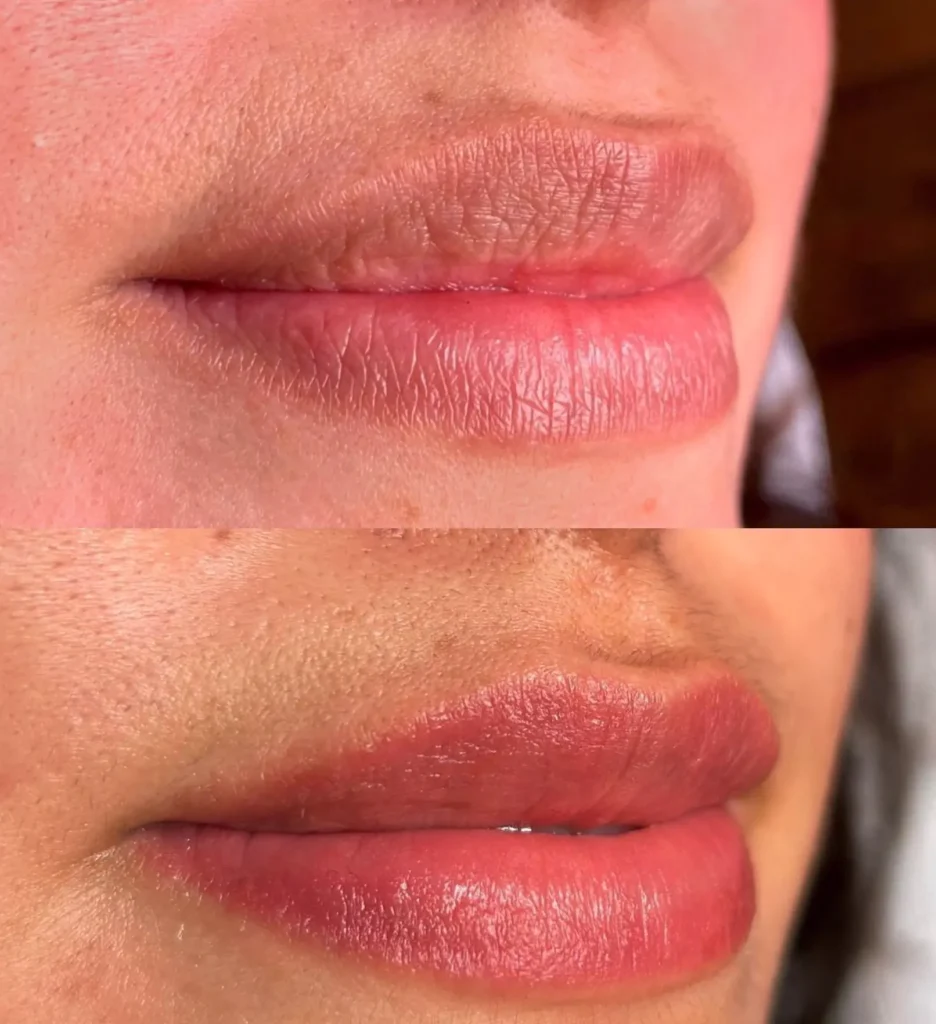
Whether you’re using a cosmetic tattoo machine for permanent makeup or performing a microblading procedure by hand, the tool and your touch matter. Every cosmetic tattoo artist should master their setup inside out before ever picking up a needle.
Tattoo Machines:
- Great for consistency
- Ideal for cosmetic tattooing services like lip tattoos or eyeliner tattoos
Microblading Tools:
- AKA micro – blading
- Create natural-looking, hair-like strokes
- More pressure-sensitive and better suited for clients with specific beauty routine goals
Technique Tips:
- Proper skin stretch reduces trauma
- Smooth, controlled motion ensures pigment enters the correct layer of skin
- Minimal bleeding = correct depth
How Skin Type Affects Tattooing Depth
Skin type and condition matter just as much as area:
- Oily skin: Risk of pigment diffusion, especially on brows
- Dry skin: May need more aftercare cream to avoid flaking
- Asian skin: May require careful pigment colour selection to suit skin undertones
- Mature skin: Thinner, more fragile; needs slower approach and gentler pressure
Add sun exposure, recent tanning treatments or tanning beds, allergies to hair dyes, or use of harsh skin care products into the mix, and you’ve got more variables than your average brow shape quiz. A well-trained cosmetic tattooist knows how to tailor each tattoo procedure for optimal results.
Signs to Watch For
Experienced artists use touch and sight to find that sweet spot.
- Slight resistance and pinpoint bleeding = just right
- Pigment should not ooze or pool
- Skin should stay intact with minimal bit of swelling
- No excessive trauma, tearing or redness
“In doubt? Check pigment flow and feedback. Depth should feel like a glide, not a scrape.”
Depth Affects That Too
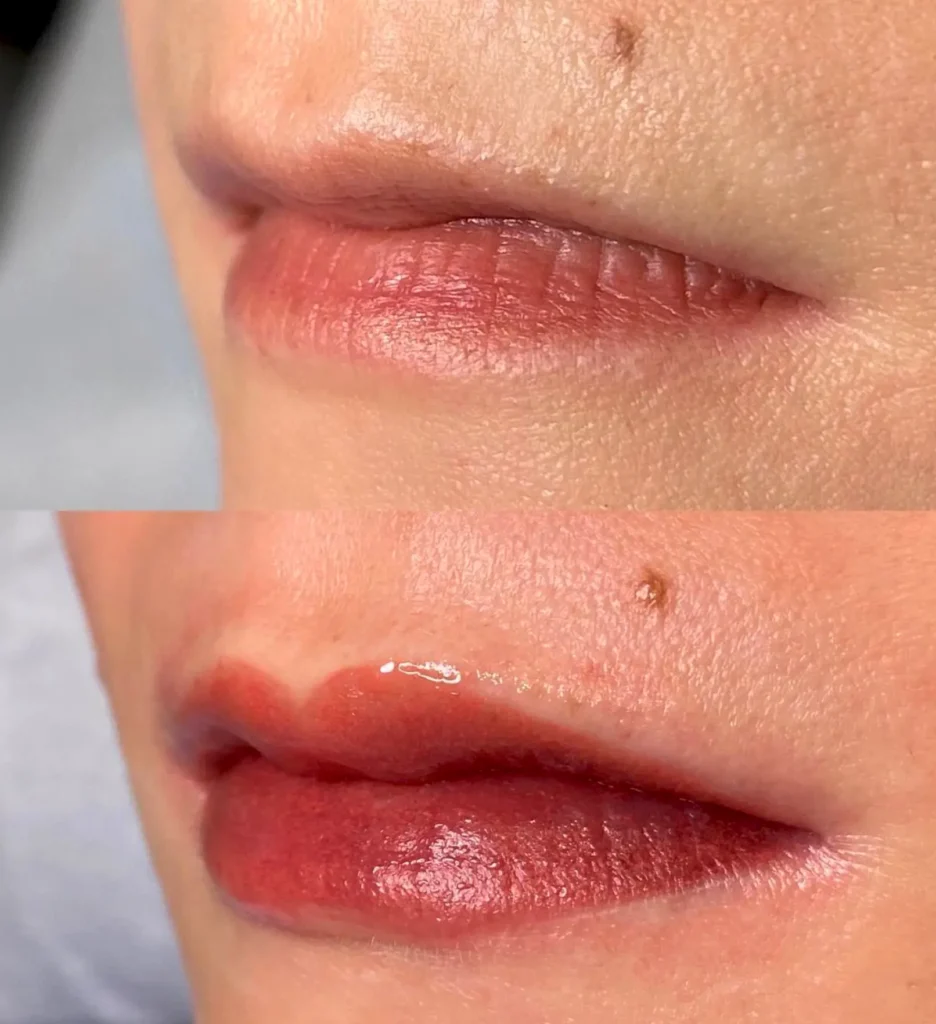
Healing time varies from 4-6 weeks depending on skin type, age, and overall health. Cosmetic tattooing isn’t just about the appointment — aftercare and healing play a huge role in results.
Proper healing looks like:
- Light flaking 4-5 weeks post treatment
- Stable pigment within 6-8 weeks post treatment
- Minor swelling for lip tattoo or eyeliner tattooing in the first 2-3 days
Follow the aftercare guidelines provided during your initial appointment. We recommend:
- Aftercare kit with lotion or ointment
- Avoiding sun exposure, hot yoga, and tanning beds
- No lash extensions or heavy skin care products near treated area
Aftercare of pigmentations affects long-lasting results. Use high-quality pigments, follow aftercare tips, and avoid blood thinner meds unless prescribed.
Depth vs. Permanence: What’s the Deal?
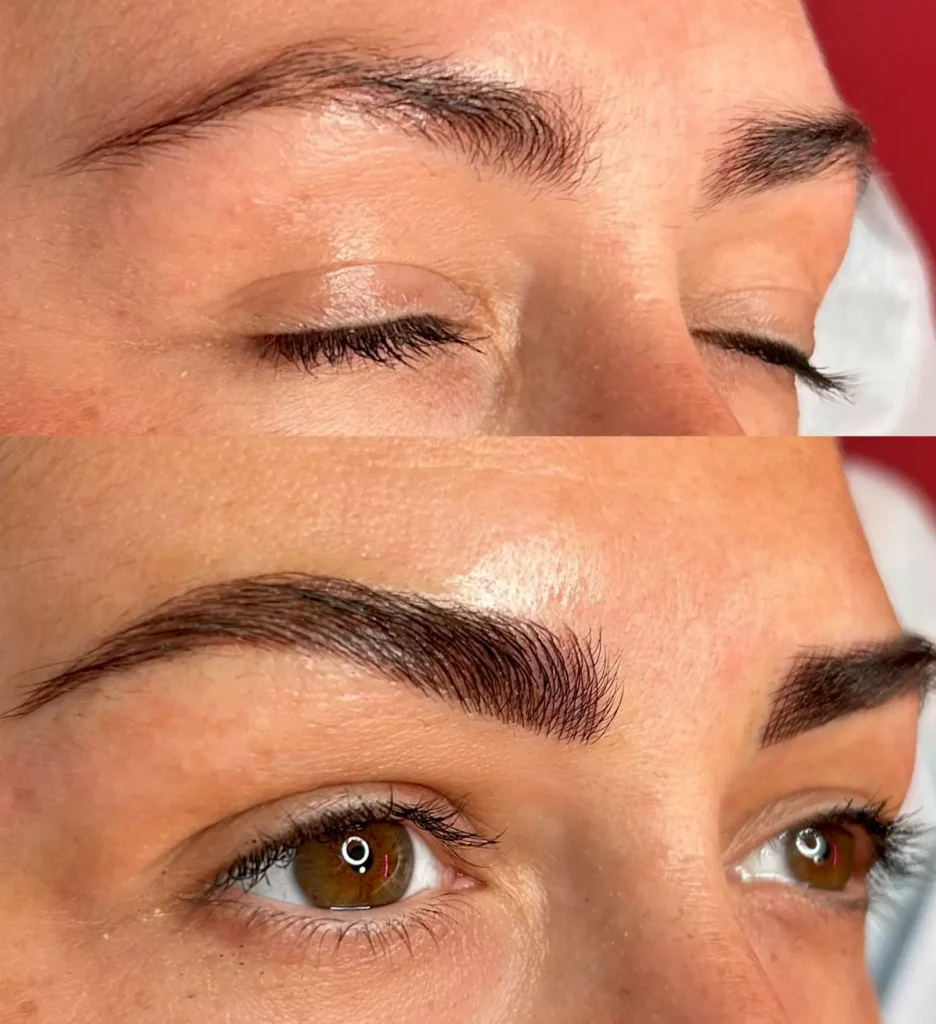
Semi-permanent tattooing technique means cosmetic tattoos fade over 1-3 years. But only if the tattoo artist stays within the correct skin depth.
If pigment reaches the reticular dermis:
- It behaves like a normal tattoo
- Colour shifts and Tattoo Refresh becomes harder
- Risk of complications like scarring or uneven fading increases
2025 Beauty Data: Why This Matters More Than Ever
According to the 2025 Beauty Insight Report:
- Over 63% of Australian beauty enthusiasts research their artist’s training before a tattoo appointment
- 25% of touch-up cases are linked to incorrect depth or poor aftercare instructions
- Common types of complaints include excessive pigment loss, uneven eyeliner tattoo, or botched microblading strokes
Studios offering professional cosmetic tattooing service and clear aftercare advice are gaining ground in an industry saturated with filters and quick fixes. Cosmetic Tattoo Melbourne experts are leading the charge with education-first consultations and results that actually last.
Final Thoughts
Cosmetic tattooing is both science and art. Whether you’re after adventurous colours, subtle eyeliner tattoo, or a classic cosmetic eyebrow tattoo, the depth makes or breaks your result.
Be honest about:
- Medical conditions
- Use of thinner medication or prescription medications
- Beauty routine (e.g., tanning beds, lash extensions, actual makeup habits)
Want to know if you’re a good candidate for microblading? Book a permanent makeup appointment or reach out to a reputable cosmetic tattoo artist who understands your natural features and goals.
FAQ
What is the ideal depth for cosmetic tattoos?
Between 0.5mm and 1.5mm depending on area and skin type. The sweet spot is the papillary dermis.
Can going too deep cause permanent damage?
Yes. It can lead to scarring, pigment migration, and permanent discolouration.
What factors influence healing time?
Skin type, blood thinners, fish oil, and aftercare compliance. Most clients heal in 4-6 weeks.
Does permanent makeup hurt?
With numbing cream, it feels like mild scratching. Still, everyone’s pain threshold differs.
How long does the tattoo procedure take?
Depending on area, allow 1-3 hours. Lips may take 2 – 3 hours, brows closer to 1-2. Add 4-8 week touch-up for optimal results.

